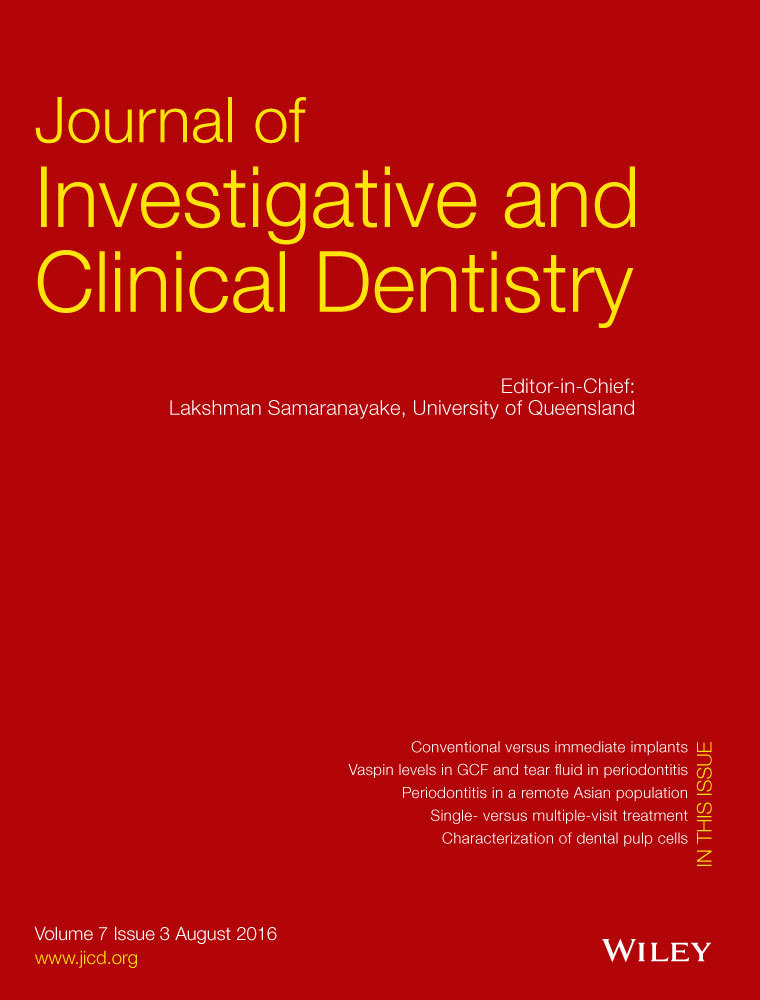In vitro toxicity of propolis in comparison with other primary teeth pulpotomy agents on human fibroblasts
Abstract
Aim
The aim of this study was to assess and compare the in vitro toxicity of propolis with other primary teeth pulpotomy medicaments.
Methods
Human periodontal ligament (PDL) cells were subjected to different concentrations of propolis, formocresol, ferric sulfate, and gray mineral trioxide aggregate (MTA) (0.05, 0.5, 5, 50, and 100 μg/mL) for 24 h at 37°C. Cells that were not exposed to the tested materials served as the negative control. In vitro toxicity was assessed using 3-(4,5-dimethylthiazol-2-yl)-2,5-diphenyltetrazolium bromide assay. Statistical analysis of the data was accomplished using anova and Tukey statistical tests (P < 0.05).
Results
Only propolis and gray MTA had comparable cell viability to the negative control group. Almost all remaining concentrations of tested materials were significantly inferior to the negative control after 24 h of exposure (P < 0.05).
Conclusion
Propolis and MTA are more biocompatible than formocresol and ferric sulfate since they were both able to preserve PDL fibroblasts for up to 24 h.




